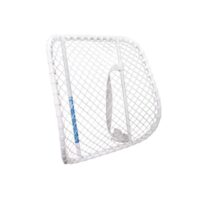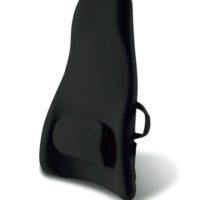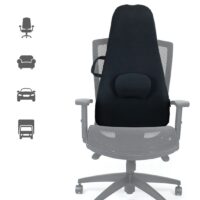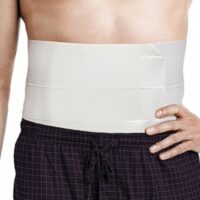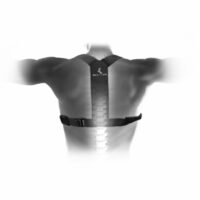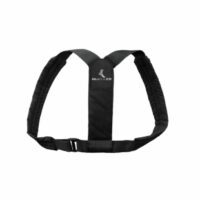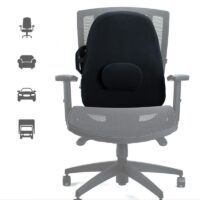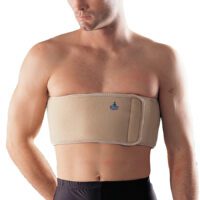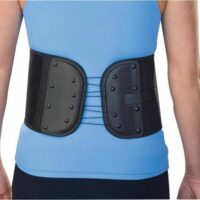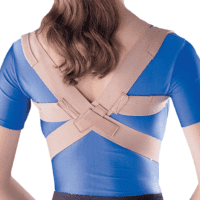Scoliosis
Article by John Miller

Scoliosis: Managing Spinal Curvature
Why is Scoliosis Diagnosis Important?
Scoliosis, characterised by an abnormal curvature of the spine, affects about 2% of the population, with 10% of cases being severe. This condition creates an “S” or “C” shape in the spine, rather than a straight line. The peak curvature usually occurs in the mid-back or where the thoracic and lumbar regions meet, rarely affecting the neck.
How to Identify Scoliosis Early?
Identifying scoliosis early, particularly between ages 11 and 14, is crucial. Early action can enhance comfort, muscle strength, and movement, often avoiding the need for surgery. Regular check-ups with a physiotherapist or doctor can help detect scoliosis by examining the spine, shoulders, rib cage, pelvis, legs, and feet for irregularities. X-rays are used to measure the curve’s angle and determine the severity. Significant curves, especially in adolescents, require evaluation by an orthopaedic spine specialist.
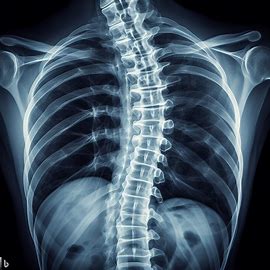
Who Can Treat Scoliosis?
Treatment varies based on the severity of the condition. Non-surgical options include physiotherapy, bracing, and exercises. Severe cases might need surgery to straighten the spine. Consulting a healthcare professional ensures a tailored treatment plan. Early detection and intervention are key to managing scoliosis effectively.
Where Does Scoliosis Occur?
Scoliosis can manifest in various forms:
- Structural scoliosis: The most prevalent type, often genetic, emerging during early adolescence.
- Functional scoliosis: Can develop in adulthood due to injuries or repetitive actions.
- Pathology-related scoliosis: Arises from neuromuscular disorders or severe spinal injuries.
Each type requires a specific approach to treatment and management.
When Should You Seek Help?
If you notice symptoms like uneven hips and shoulders, one shoulder blade or ribs sticking out more, or leaning to one side, it’s important to seek medical advice promptly. Early diagnosis is crucial for effective treatment. Regular X-rays and monitoring can help track the progression and effectiveness of the treatment.
What are the Treatment Options?
- Physiotherapy: Focuses on pain management, posture improvement, and stopping further curvature via a strengthening and flexibility program.
- Orthopaedic Bracing: Essential for adolescents with growing bones to prevent further curvature.
- Surgery: Needed for severe cases to straighten the spine.
- Rehabilitation: Post-surgery rehab helps restore strength, flexibility, and function to the spine and surrounding muscles.
New Research on Scoliosis
Research studies highlight advancements in non-surgical treatments for scoliosis. Researchers suggest that early intervention with physiotherapy can potentially reduce the need for surgery in mild cases. Other studies have found that bracing is highly effective in preventing curve progression in adolescents, but compliance does hamper the overall success of bracing. (Menger RP, Sin AH. 2023)
Conclusion and What to Do?
If you suspect scoliosis in yourself or your child, seeking professional advice from a physiotherapist or doctor is vital. Early detection and tailored treatment are key to managing this condition effectively.
Rochedale - Call 38410277
Book Online: RochedaleSalisbury - Call 32751044
Book Online: SalisburySandgate - Call 32691122
Book Online: SandgateScoliosis FAQs
- What is scoliosis? Scoliosis is an abnormal curvature of the spine that can appear as an “S” or “C” shape. It often develops during adolescence but can also occur in adulthood due to injuries or neuromuscular disorders. Read more.
- How is scoliosis diagnosed? Physiotherapists and doctors detect scoliosis through physical exams and X-rays, measuring the curvature’s angle to determine severity. Early detection is crucial for effective treatment. Read more.
- What are the symptoms of scoliosis? Symptoms include uneven hips and shoulders, one shoulder blade sticking out more, and leaning to one side. Pain around these areas is also common. Read more.
- How is scoliosis treated? Treatment varies from physiotherapy and bracing to surgery in severe cases. The aim is to manage pain, improve posture, and prevent further curvature. Read more.
- What causes scoliosis? Scoliosis can be genetic (structural), develop due to injuries or repetitive actions (functional), or arise from neuromuscular disorders (pathology-related). Read more.
- Can scoliosis be cured? While scoliosis cannot be completely cured, early detection and treatment can manage symptoms and prevent progression. Read more.
Related Articles
- Back Pain Causes: Discusses common causes of back pain and how to manage them.
- Physiotherapy Treatment: Explains various physiotherapy back treatments available.
- Postural Correction: Focuses on correcting poor posture and its benefits.
- Adolescent Back Issues: Explores growth-related issues in adolescents.
- Spinal Rehabilitation: Covers rehabilitation techniques for spinal injuries.
- Sports Injury Management: Guides on managing sports injuries effectively.
- Chronic Pain Management: Strategies for managing chronic pain.
- Exercise Therapy: Benefits of exercise therapy for various conditions.
- Scoliosis: Detailed overview of scoliosis, symptoms, and treatments.
- Scoliosis Overview: Comprehensive guide on scoliosis causes, symptoms, and treatments.
- Scoliosis Research: Latest research findings on scoliosis and its management.





